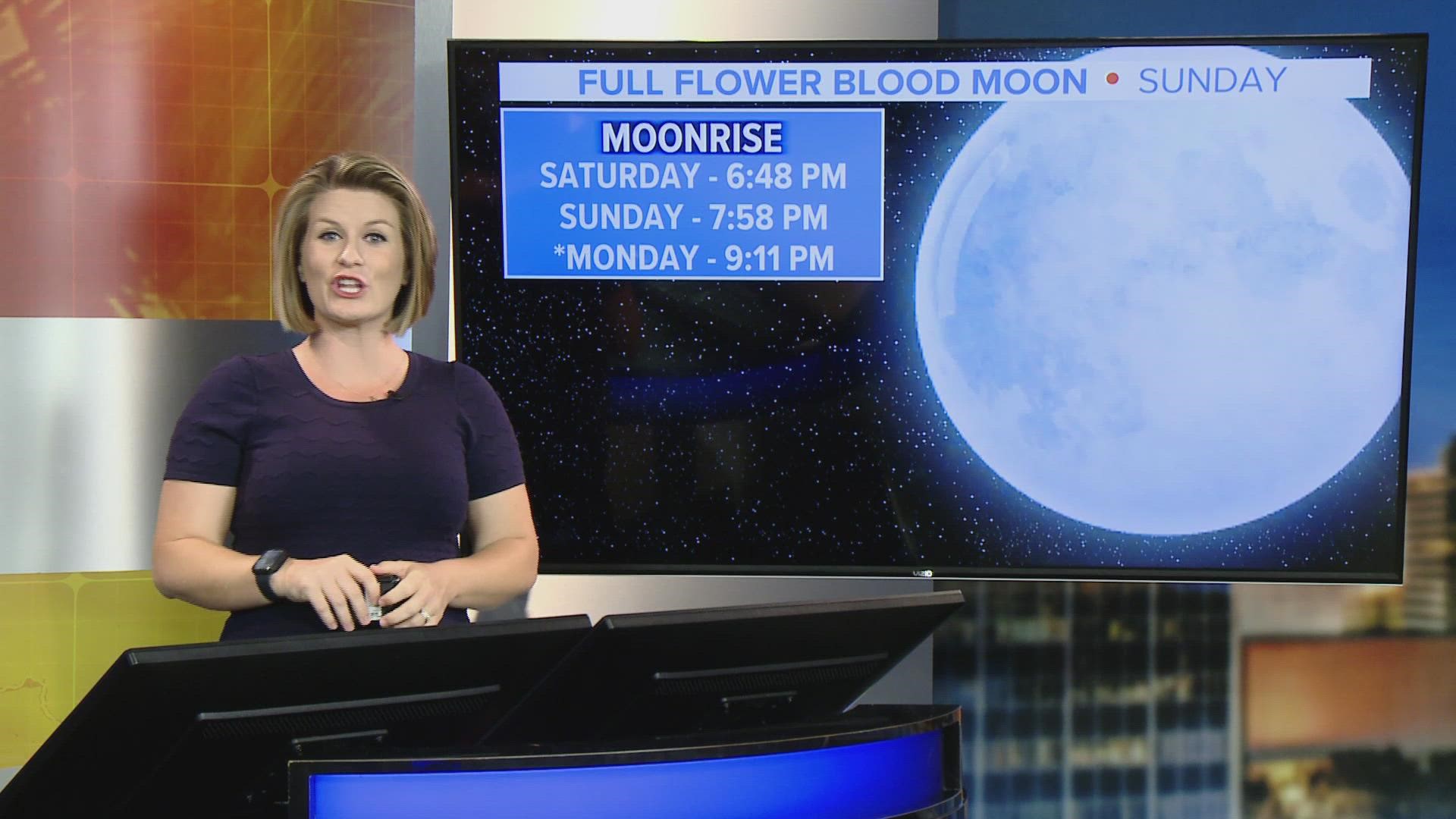JACKSONVILLE, Fla. — Get ready for a spectacular sight in the skies this weekend!
May's full moon peaks May 15-16, but that's not all. This full moon will also be a super moon AND coincide with a total lunar eclipse.
Cool, right? Let's break it all down.
The full moon rise on Sunday will be at 7:58 p.m. in Jacksonville. It reaches peak illumination at 12:15 a.m. (Monday, May 16). It will rise again in its full phase on Monday at 9:11 p.m.
May's full moon is called the Flower Moon, according to The Old Farmer's Almanac, and the nickname should come to no surprise. You've most likely heard the saying, "April showers, bring May flowers!" Therefore, the Flower Moon was an obvious choice as spring is in full swing with flowers in full abundance across North America.
This moon is also the first super moon of the year. Super moons appear larger and brighter as its when the Moon is at least 90% of perigee, or at the point in the Moon's orbit closest to Earth. There will be a total of four super moons in 2022.
So, what about the total lunar eclipse?
A lunar eclipse occurs when the Earth passes directly between the Moon and the Sun. This results in the Earth casting a shadow on the Moon. During a total lunar eclipse, the Moon is fully covered or obscured by the Earth's shadow, which creates a reddish hue to be cast on the Moon. This is why it's termed the "blood moon."
This month's total lunar eclipse will be visible for stargazers across most of North America. That is, if the sky conditions will allow! It's looking like Jacksonville, FL and the rest of the First Coast will have a good shot at the incredible view.
ECLIPSE TIMELINE
- Penumbral Eclipse Begins: The Moon enters the outer edge of Earth’s shadow (called the “penumbra”) at 9:31 p.m. on May 15.
- Partial Eclipse Begins: The Moon enters the darkest part of Earth’s shadow (the ”umbra”) at 10:27 p.m.
- Total Eclipse Begins: Totality begins at 11:28 p.m.
- MAXIMUM ECLIPSE: The eclipse reaches its peak (called the “maximum”) at 12:11 a.m. on May 16. This is the best time to view the total lunar eclipse!
- Total Eclipse Ends: Totality ends at 12:53 a.m. on May 16.
- Partial Eclipse Ends: The Moon leaves the umbra at 1:54 a.m. on May 16.
- Penumbral Eclipse Ends: The Moon leaves the penumbra at 2:52 a.m. on May 16.

